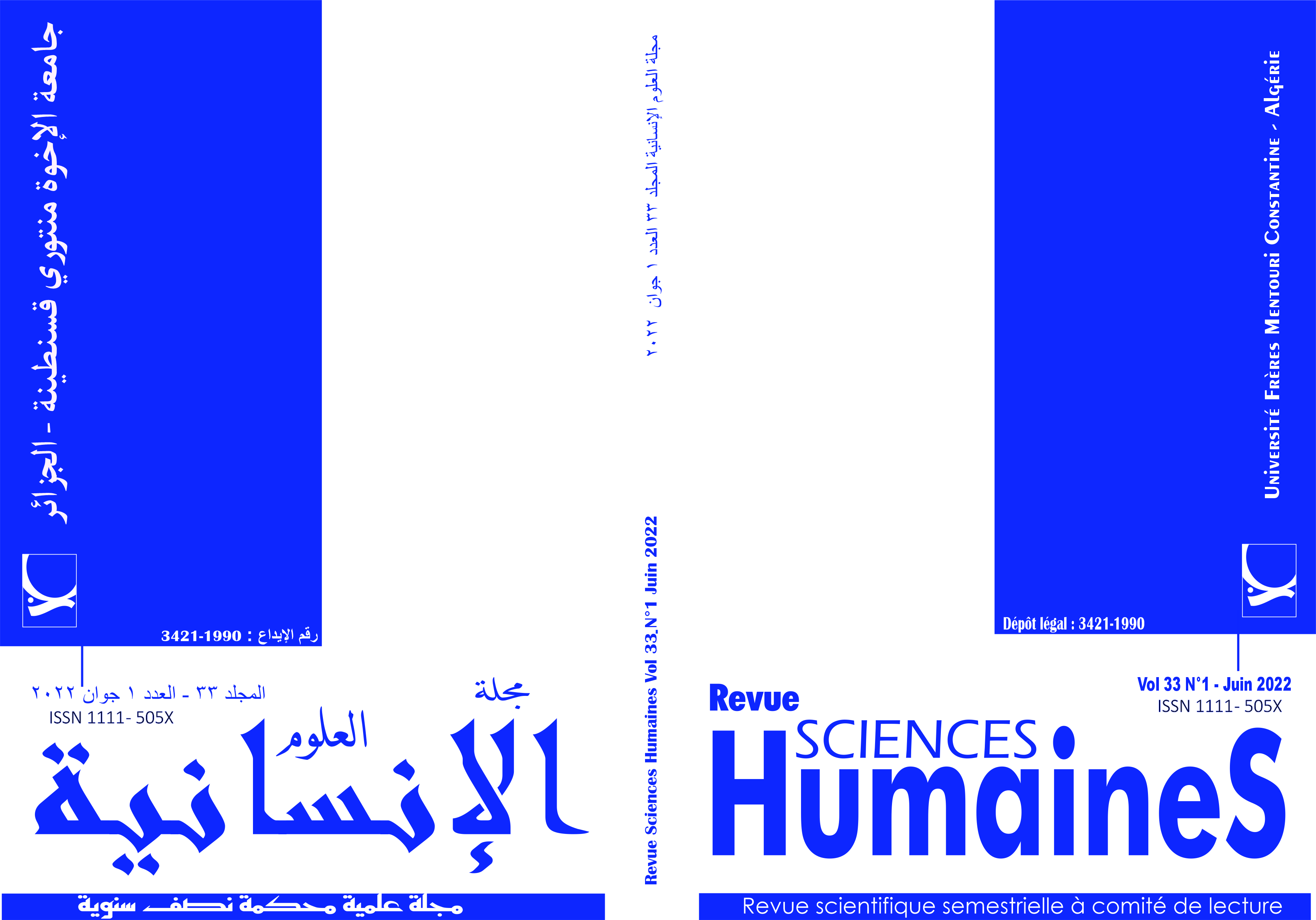Job empowerment and its relationship to enhancing the organizational identity
Empirical study at Hodna Milk factory in M’sila, Algeria.
Keywords:
professional empowerment, Strengthen the organizational identity, enterpriseAbstract
Organizational phenomena with a cultural dimension still dominate administrative theorizing because of their implications for directing and stereotyping the behavior and practices of individuals. Such as commitment and loyalty talk and organizational identity talk as an advanced level for this.
The research paper is an empirical study that attempts to investigate the relationship between empowerment at work as a modern organizational phenomenon and strengthening organizational identity as a cultural dimension.
She took HODNA's Dairy as her research community, with their 169 units representing her frameworks, which were studied by the full inventory method. And because the study aims to diagnose the relationship between the variables, we adopted the descriptive and analytical method, with its only tool questionnaire form containing 38 items. And depending on the known statistical measures and methods, the statistical processing of the data obtained took place in three stages: Addressing the socio-professional characteristics, the statistical nature of the responses, then testing the relationship and discussing the hypotheses, which resulted in results and recommendations, the most important of which are; The dimensions of professional empowerment are evident / the administration strives to raise the levels of commitment and loyalty of its workers / the strengthening of the organizational identity is an ongoing process led by the dairy administration and appears in the behavior and practices of individuals.
Downloads
References
أفندي، عطية (2003)، تمكين العاملين مدخل للتحسين والتطوير، القاهرة، المنظمة العربية للتنمية الإدارية.
البشايشة ، سامر عبد المجيد(2008)، أثر التمكين الوظيفي في تعزيز الإبداع التنظيم لدى العاملين في سلطة منطقة العقبة الاقتصادية الخاصة، المجلة العربية للعلوم الإدارية العدد(2)، المجلد (15)، الكويت، ص ص213 -257.
الحراحشة ،محمد، والهيتي،صلاح(2006)، أثر التمكين الإداري،و الدعم التنظيمي في السلوك الإبداعي كما يراه العاملون في شركة الاتصالات الأردنية، مجلة دراسات العلوم الإدارية الجامعية الأردنية، العدد 2(المجلد33).
الدستور الجزائري لسنة 1996
دهش،إحسان جلاب وآخرون(2015)، دور العقد النفسي في بناء الهوية الاجتماعية للعاملين؛ دراسة تحليلية لآراء عينة من مدرسي الكليات الأهلية في محافظات الفرات الأوسط، مجلة الغرى للعلوم الاقتصادية والإدارية، مجلد13 (عدد36 )، العراق، جامعة القادسية، ص ص157-171.
رشيد واضح(2003)، المؤسسة في التشريع الجزائري، الجزائر، دار هومة للطباعة والنشر.
رعد الرصن، أيمن ديوب(2015)، نظرية المنظمة والتطوير التنظيمي، دمشق سوريا،.منشورات جامعة دمشق.
محمد العربي ولد خليفة(2003)، المسألة الثقافية وقضايا اللسان والهوية، الجزائر، ديوان المطبوعات الجزائرية.
ناصر محمد سعود، جرادات و آخرون(2013 )، أثر التمكن الهيكلي في تحقيق التمكين التقني للعاملين في المنظمات الأردنية العامة، العدد1 (المجلد8)، ص ص63-89.
هارون نورة(2019)، الهوية المهنية للعامل الجزائري، أطروحة دكتوراه غير منشورة، الجزائر، جامعة المسيلة.
Aust,P.T.(2004), Communicated Values as in Dictators of Organizational Identity communication studies.
Blader stevent L.R Tyler(2009), Testing and Extending the Group Engagement Model ; Linkages between social identity; Procedural Justice; Economic Outcomes ; and Extrarole Behavion”; Journal of Applied Psychology, Vol94( No.2).
-Collins, David (1995), Rooting For Empowerment in Organization, Vol3, No(3).
-Cumminghan, I and Hyman, j. Balday, C (1996), Empowerment ; the power to do what؟ , Industrial Relation Journal , Vol27, (No 2)
-Duvall cacheryking (1999), Developing individual freed onto; Participation Empourement , An International journal , Vol7, (No 8).
-FRAYSSE, B(2000), La saisie des représentations pour comprendre La construction de sédentaires, Revue des science de l’éducation, Montréal :Presse Universitaire de Montréal, vol 26,(N°03).
Mael, fred A and blake E. Ashforth(2001).In edification in Work, Wer, Sports and Religion :contrasting the Benefits Risks , journal for the theory of social behavior, Vol.31(No.2).
-Nixon, B(1994), Developing an Empowerment Culture in organization; Empowerment in Organization, Vol2, (No 3).
-Spreitzer, G(1995), Psychological Empoicarment in the Workplace.
Dimensions Measurement and Validation, Academy of Management journal vol.(38), No(5).
-Spreitzer, G.M.et al(1997), A dimensional analysis of the relationship between psychological Empowerment and effectiveness ,and strain, journal of management, Vol23(No5).
Toumas and veltrhouse(1990), Cognitive Elements of Empowerment: An "Interpretive" Model of Intrinsic Task Motivation, Academy of Management Review, Vol 15( No4).
-Voss,Z.G.,Cable,D.M.,andVoss,G.B.(2006), Organizational Identity and firm performance, Organizational Sience, , Vol17, (N06).
httpl :drben.comlarlaticles locate-991.
Downloads
Published
Issue
Section
License

This work is licensed under a Creative Commons Attribution-NonCommercial-NoDerivatives 4.0 International License.












